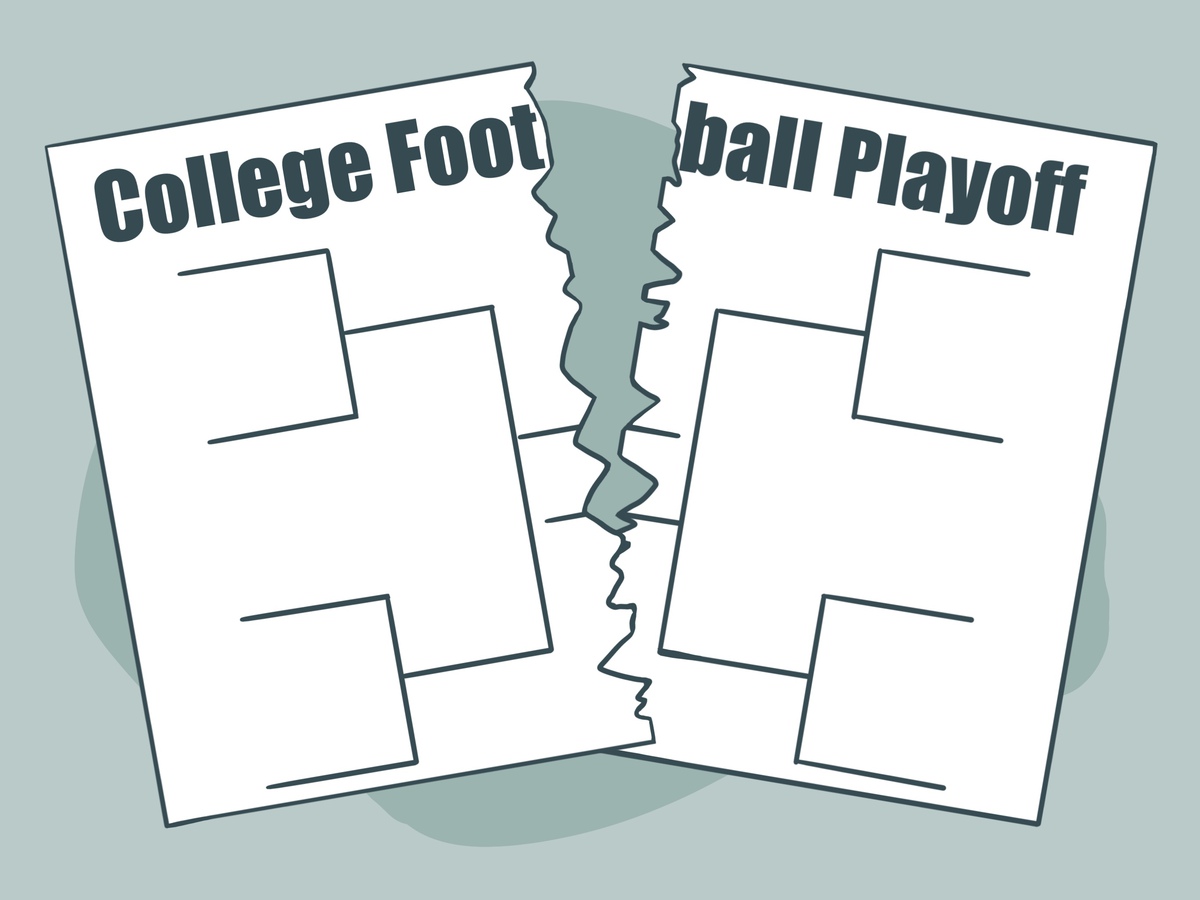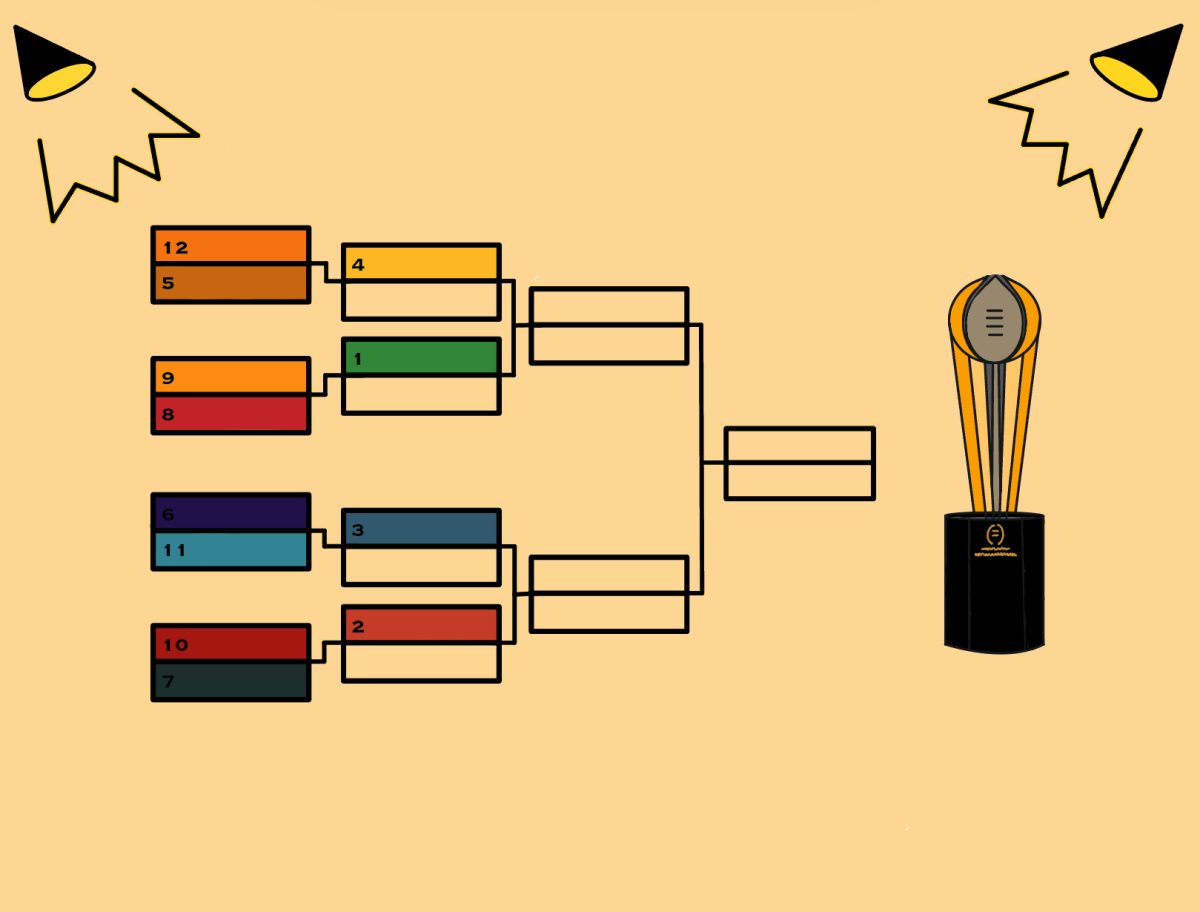On Monday, Jan. 8, the Michigan Wolverines put forth a dominant performance in defeating the Washington Huskies 34-13, marking the end of the 2023 college football season as well as the four-team College Football Playoff (CFP). At this time next year, the top Division I College Football teams will be competing in the inaugural 12-team CFP — a much-needed adjustment to the ever-changing college football landscape.
In the Fall of 2022, the Board of Managers for the CFP made the decision to expand the playoff from four teams to 12, starting in 2026. Just a couple months later in December, the Board of Managers altered some of the terms from their original vote and pushed the start of the new format up to 2024.
The extended format will include the champions from the top six conferences. The final six spots will be filled by at-large bids, as ordered by the CFP selection committee. Of the six conference championship squads, the top four will receive a bye, giving them an automatic spot in the quarterfinals. All of the rankings, from the at-large bids to the conference champions, will be decided on by the CFP selection committee, similar to the current process.
Since 1998, the National Championship format for the Football Bowl Subdivision (FBS) NCAA Division I College Football has followed one of two formats: the BCS National Championship Game, and the four-team College Football Playoff.
The Bowl Championship Series (BCS) was created to match up the two highest-ranked teams in a bowl game for the national title, using both polls and team statistics to build the rankings. After a split decision in 2003, and many other questions about the rankings process, the writing was on the wall that a new format was on the way.
In 2014, the national championship format shifted to a four-team playoff. This format was designed to create more accountability within the selection committee and open up the format for more teams to have the chance to compete for a title. The semi finals would be played with the 1-seeded team vs. the 4-seeded team and the 2-seeded team vs. the 3-seeded team. These matchups would be assigned to a bowl game, but the national championship would be its own entity.
With the expanded format, more teams are involved, allowing for an increase in chaos and number of enticing, fresh matchups every year. Additionally, a wider range of teams will have the opportunity to make a run for a championship, mixing up the college football landscape.
March Madness for Men’s and Women’s college basketball serves as an example for why this is a perfect change for college football. The 68-team bracket breeds massive upsets, underdog runs, and elevates the stage for the players. College Football’s exhilarating brand is perfect for a larger 12-team bracket because it can bring in more teams and fan bases.
Within the Division I level of college football — beyond the FBS — there is also the Football Championship Subdivision (FCS). Though the FCS doesn’t have the same talent, funding, and scholarship opportunities as the FBS, their playoff format is similar to the new 12-team system that the CFP is creating. The FCS uses a 24-team playoff system, with 10 spots guaranteed through conference championships and the remaining 14 spots given out through at-large qualifications. Similar to the new 12-team layout in FBS, the FCS also gives the top eight teams first-round byes — comparable to the byes that the top four teams will receive in the FBS next season.
Another underrated piece to the 12-team CFP puzzle is the on-campus opening games before the eight-team quarterfinal round. The opening round of the 12-team College Football Playoff will be played on the higher-ranked team’s home field. In the regular season, College Football atmospheres are already electric, so sprinkling in the added intensity of a playoff game will make those environments extra exciting.
With so much uncertainty in college football, from the transfer portal, competing Name, Image, and Likeness (NIL) deals, and shifting conferences, a 12-team CFP is exactly what the sport needs. As a result of deeper conferences, an extended playoff field allows teams who play in the Southeastern Conference (SEC) or Big Ten to continue to battle for a title, even after dropping a couple of games. This new layout allows teams to persevere through early-season adversity and compete for the ultimate goal: a national championship.














